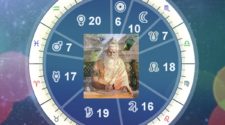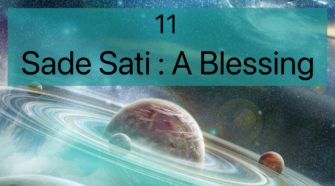You would have heard the term Rahu Kala (Rahu Kalam) a lot, if not a lot, at least in some movie or some god-fearing grandmother scaring you with it. This Rahu Kala or the Rahu’s operating period during a day brings fear in many. It is the time of the day that is under the control of Rahu- the dreadful. Swarbhanu – was his name in an earlier avatar.
Now, Swarbhanu doesn’t sound that dreadful, but he was the same. In the Vedas, one can see the growth of these gods, say; in Rigved an X God has 2-3 qualities, same God will get additional 2-3 qualities in the later Vedas. So they treat it as a newly obtained revelation about the same God. Swarbhanu, even in his earlier days, was after the Sun, even eclipsing him then.
All this was before the Samudra Manthan. Samudra Manthan is one of the most critical events mentioned in the Puranas. This event has many parallels in various other ancient world stories, especially in the Norse Mythology. The need of Samudra Manthan rose as follows:

Prateep Khotchabua,
Churning the milk of ocean.
Oil on canvas
011. MOCA, Bangkok. Thailand
Once Indra inadvertently insulted Rishi Durvasa. The Rishi had gifted him Garland, which Indra gave to his elephant Airavat, who threw it to the ground due to the bees on the Garland. The dumping of the gift enraged the short-tempered Rishi, and he cursed Indra to lose all that he has. Cut to —War between the Asura and Devas in which the Devas got battered and lost everything they had.
Cut to — Vishnu’s court: the Devas led by Indra reach there to plead his help. Vishnu suggests they approach it diplomatically. Upon exploring, they find Samudra Manthan as a possible method to regain lost wealth. However, to achieve this, astronomical feet, the support of the Asuras is compulsory.
Cut to— Vast beach of the Kshirsagar. Both eternal inimical parties deal out the details. Mount Mandar placed on Kurma back with Vasuki tied around the Mandar to churn the Ocean. Cut to— The emerged Amrut filled Pot was ready for distribution. That summarises the need for the Samudra Manthan.
Cut to — Deva and Asura sitting in a straight line, like the nursery kids, being offered Amrut by none other than Mohini. Starting with the Devas, Mohini poured Amrut, planning to finish it before it reaches the Asura. Smart Swarbhanu knowing the slight-handed nature of Devas, disguised himself as Deva, gatecrashed Deva’s queue, and sat next to Sun and Moon. Sun Moon outed Swarbhanu as Asura, just as Mohini had offered him the Amrut. Immediately Vishnu, with his Sudarshan Chakra, slit Swarbhanu’s throat, but by then, he had gulped the Amrut, achieving immortality. This act left Swarbhanu in two pieces, head -Rahu and rest body-Ketu.

That’s his story, there may be few variations, but the crux is that during Manthan, Asuras and Devas worked together to get the jewels of the universe. The Devas tried to hog the Amrut for themselves, which Swarbhanu realized and tried to outwit the Devas; he succeeded, but with a catch.
That was the linear part of Indian storytelling. The concepts, thoughts underlying a large part of the story depend on the reader’s capacity to ponder and think.
A few seers and sages have thought and pondered for our benefit, and they have shared many layers that such stories try to tell. These stories form the basis of Jyotish. Through it, we learn what this particular planet means, intends, and has potential. Rahu and Ketu are some of the most challenging planets to judge, understand and interpret.
Of the split Rahu Ketu, I will limit just to Rahu. Like we all know, Rahu is the dreadful one. He is, after all, an asura, so by definition, we should dread him. He has always been fighting against Sun, eclipsing him, the hearth of our solar system.
Rahu has the rights over Kaliyug. Greed-associated with Kaliyug imbibed in Rahu. By not waiting for his turn to drink Amrut- He showed his greediness. Maya, another word associated with Kaliyug, is again connected to Rahu. He disguised himself (as Maya) to sit amongst the devas and drank the Amrut. Rahu thus represents the faculty to transform, to take a form of another, cause the illusion. Persons who can apply this ability to transform are spies, movie actors, thieves, and politicians. Rahu is the king of diplomacy; thus, all diplomats come under his realm.
 Rahu saw what the deceit the Devas had planned and could act thereupon. Rahu could see that Mohini is none other than Vishnu himself, proving he can see through Maya. Rahu’s ability to see through the Maya is beneficial and makes him a unique planet for Kaliyug. Along with the skill to create an illusion, he holds the potential to break through that illusion too. Rahu did not share the info with other Asuras; this makes him self-centered, a quick thinker, and independent.
Rahu saw what the deceit the Devas had planned and could act thereupon. Rahu could see that Mohini is none other than Vishnu himself, proving he can see through Maya. Rahu’s ability to see through the Maya is beneficial and makes him a unique planet for Kaliyug. Along with the skill to create an illusion, he holds the potential to break through that illusion too. Rahu did not share the info with other Asuras; this makes him self-centered, a quick thinker, and independent.
The more one will read that story in detail, the more one learns about Rahu and his importance in this era. Other stories in the Puranas also shed light on Rahu. Remember, he gulps the Sun without actually touching it. Again this is Maya, but his Maya casts long shadows on us earthlings. Rahu is hyper-intelligent, extremely good at setting goals, and being hyper-motivated to reach those. But, he is just a ‘head without a body; his thirst/greed has no bottom. Nothing satiates him. Once he sets a goal, he starts to consume; there is no end to it. There is nothing that can set one free from his grip.
Rahu, as good as he sounds, is terrible just for the same reasons. Rahu is ‘the ill of excesses.’ He can set extraordinary goals and keep you motivated like nothing else, but all that is just a mindless rush, and the worst part is that he cannot guarantee those goals. That’s the illusion he creates; it may fool people around, but when the time comes, his Maya breaks. He never got what he wanted despite all the effort he put in. Rahu is the classic case of “haath aaya muh na lagaa” He will surely take you to the highest position, close to the goal, but deprive you of it, so much so that it will remain as a lifelong scar.
You will notice many people reaching a high position with a lot of gala, fame, etc., around them, and then from the top position, they fall into the depths of anonymity, nadirs of disgrace. The prime example would be Trump, Jupiter gave him the high position, but Rahu dumped him hard. Rahu is an excruciatingly lousy teacher. He etches his lessons on the soul, which one carries from one life to another. Remember Rahu is the reason (at least denotes) why we are born.
Rahu undoubtedly gives you fame, can make you Trump, or some great Guru like Bhaktivendata Prabhupada, some great actor, or a famous spy like Mata Hari. But, Rahu has energies that are most difficult to handle. Hence most times, his path is terrible. The intelligent fundamentalists fit into these categories, who know exactly how to twist and manipulate to cause maximum damage. India has many godmen behind bars, which are again the best examples of Rahu gone awry on the path of spirituality. The evil genius of Rahu is his duality. It can make you highly spiritual and riddle you with materialism, avarice for cliched tan man dhan.
 Rahu can thus take one on rollercoaster life, extremes being the keywords here. He is like Lenka’s song ‘Everything at once,’ where his desires know no bounds, and they want to be whatever the mind can imagine. This power to imagine makes Rahu expand things to the vastness of the universe or shrink it to the size of atoms. Remember, he gambled life for immortality; he got it but lost it too. That’s what he is, either highest position or lowest position. There is nothing in between where he can work.
Rahu can thus take one on rollercoaster life, extremes being the keywords here. He is like Lenka’s song ‘Everything at once,’ where his desires know no bounds, and they want to be whatever the mind can imagine. This power to imagine makes Rahu expand things to the vastness of the universe or shrink it to the size of atoms. Remember, he gambled life for immortality; he got it but lost it too. That’s what he is, either highest position or lowest position. There is nothing in between where he can work.
There is much more to speak about Rahu, and again that all will be just scratching the surface. There is a lot to learn from that story, but I leave that to the reader’s wisdom. Just remember he is a black hole, with no bottom.















nice article
Thanx
Nice
Thanx
Why does rahu have rights over kaliyug
This can be a very long answer, but I’ll keep it short: Kaliyug is downfall of humanity and all those standard cliches. These all fall under Rahu’s jurisdiction. So be it greed, gambling, various vices, Fame, money, huge fan followings, etc.. are Rahu’s playgrounds. Rahu thus plays important role in Kaliyug, thus its said Rahu rules Kaliyug
[…] is the key. That takes us back to the story of origin, which I’ve explored in detail before (read the article here.) Indian tales are like onion layers; you peel them back multiple times, approaching them […]
[…] most is the key. That takes us back to the story of origin, which I’ve explored in detail before (read the article here.) Indian tales are like onion layers; you peel them back multiple times, approaching them […]